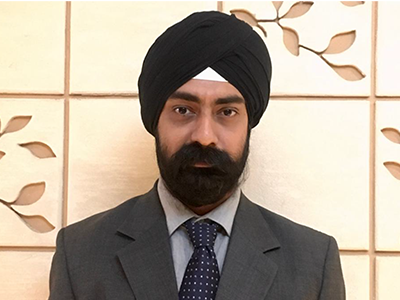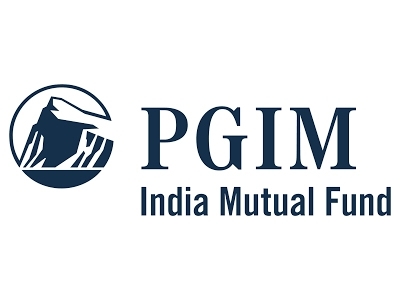 We caught up with Surjitt Singh Arora, Fund Manager PGIM India PMS. He manages PGIM India Core Equity Portfolio and PGIM India Phoenix Portfolio. With over 16 years of experience in equity research, Surjitt holds a Bachelor’s degree in management studies from Sydenham College, Mumbai and a Master’s degree in management studies from Sydenham Institute of Management and Research (SIMSREE), Mumbai.
We caught up with Surjitt Singh Arora, Fund Manager PGIM India PMS. He manages PGIM India Core Equity Portfolio and PGIM India Phoenix Portfolio. With over 16 years of experience in equity research, Surjitt holds a Bachelor’s degree in management studies from Sydenham College, Mumbai and a Master’s degree in management studies from Sydenham Institute of Management and Research (SIMSREE), Mumbai.
Many research reports show that equity markets have been overvalued and there are few opportunities left for investors. How do you read equity markets in the medium term and how comfortable are you with the valuations?
FY21 would mark the year where corporates focused on profitability, cash flow management, and balance sheet deleveraging to manage the fallout of the COVID-19 pandemic.
In fact, Nifty FY22/FY23 EPS estimates have remained stable over CY21 despite several headwinds. Nifty delivered its best performance in four years in CY21, the sixth consecutive year of positive returns
The period of making easy money is behind us. Investor expectations in terms of risk-adjusted returns need to be moderated and be more realistic. 2022 would put demands on temperament (read patience) and will put conviction to test.
Overall, strong earnings growth (FY21-FY24 earnings CAGR is pegged at 22%) after the last 6 years of low single digit earnings growth and de-leveraging of corporate India are positives in the medium term. In broader markets, there are lot of opportunities given the strong business model and the anticipated recovery in FY23E.
What are the major triggers and risks for domestic stock markets?
Two risks in 2022 which could impact short-term returns are a) the interest rate increases globally and b) supply-side pressures on account of supply chain disruption.
In the previous two decades, there have been two periods when the Fed has raised interest rates (Jun’04-Jun’06) and (Dec’16- Dec’18). The Nifty has performed well in those two periods, despite rate increases by the Fed. The Nifty gained 41% CAGR between Jun’04 and Jun’06, despite the Fed raising interest rates 17x to 5.25%. The Nifty gained 14% CAGR between Dec’16 and Dec’18 when the Fed raised rates from 0.5% to 2.5%
Notwithstanding the above risks, increased uptake of vaccines, coupled with government response should see covid move towards the endemic stage as people learn to live normal lives with the virus present.
Key positives / triggers:
- Strong earnings growth (FY21-FY24 earnings CAGR is pegged at 22%) post the last 6 years of low single digit earnings growth and
- Low debt position of corporate India - Of the BSE 500, 396 companies, excluding Financials, have seen a 7% drop in net debt in FY21 over FY20 levels. Net debt-to-equity ratio declined to 0.59x from 0.73x, which is the lowest since FY16
Why do you think the investors should invest their large lumpsum money in equity markets especially through PMS?
PMS is a minimum 5 year investment product targeted at Ultra HNIs given the minimum investment of Rs.50 lakh mandated by SEBI.
PMS is a customised and concentrated solution to investors’ money management. In my view, the portfolios are quite differentiated between PMS and other equity products.
While many investors have invested in MFs, they venture themselves into direct equity. In my view, PMS gives a better option of professional management with steady returns compared to taking the direct equity exposure. In addition, I believe, PMS is a complimentary product to MFs rather than a competing product.
You have been in investments for 16 years. What are the three things that investors should follow to grow their wealth through equity markets?
My 3 biggest learnings in my investment career are:
- Don’t time the markets – Time in the market is more important. Investors only focus on returns, but in the equation of compounding (1+r)^n , time (n) is the most crucial
- Patience is the key – Equities are a long-term vehicle for wealth creation
- Diversify your investments
How does PGIM India go about constructing PMS portfolios? How do you minimise downside risks?
The PGIM India Core Equity PMS believes that a strategy that takes active steps to minimize the incidence of these errors listed below, leads to an enhancement of chances of success in the stock market.
Permanent capital loss occurs as a result of 3 factors:
— Buying shares of companies with weak or deteriorating fundamentals
— Buying shares of companies where the management quality is less than favourable, and
— Buying when the share price is exorbitantly high.
In terms of portfolio construct, we maintain a balance between concentration as well as diversification. Our average number of stocks in the portfolio is in the range of 20-25. No individual stock weight is higher than 10% and no particular sector can exceed 30%
The PGIM India Core Equity Portfolio follows a different investment approach. Can you give us some insights into its strategy?
We have an investment universe of 180-190 companies.
We invest in structurally strong companies that are termed as good quality companies. A good quality company is a company that has reached a minimum scale in terms of revenue, has gone through at least one downcycle and emerged as a stronger company, has a consistency in cash flows and higher return on capital employed over the last 10 years.
The second aspect has been to always own companies which are market leaders in a particular domain. We have seen that market leaders generally tend to come back stronger with higher market share after the downturn as weaker players usually vanish in the downturn.
Further, we determining the growth prospects and management quality of a company. While a good track record (Quality) of a company is a necessary condition, it is not sufficient to be included in the portfolio. We seek to satisfy ourselves about the following:
(a) The ability of the company to grow its sales and profits over the next 3-5 years
(b) The ability of the company to do this without consistently resorting to additional external funding
(c) The track record of the management in capital allocation and in treating minority shareholders fairly
The above factors help us create a universe of stocks for investment in this strategy. 75% of the portfolio would be build from this universe. The remaining 25% is at the discretion of fund manager mainly to accommodate financials.
How is the approach adopted by Core Equity Portfolio different from 'value' strategy?
Core Equity Portfolio follows Growth at Reasonable Price (GARP) in line with PGIM India thought process rather than only a pure ‘value’ strategy. I am a firm believer that no particular investment style works over a period of time. Market is dynamic and investors constantly search for opportunities. As a fund manager, one needs to be cognizant of the trends in the market and adjust the portfolios accordingly.
When should an investor consider Core Equity Portfolio for investment?
- Given that PMS should be considered as a minimum 5 year product, Investor can consider Core Equity Portfolio currently.
- As alluded above, Time in the market is more important than timing the market.
What should be the recommendation of MFDs/RIAs to their clients — enhance, maintain or trim equity investment?
Maintain equity investments. In case the market corrects by 10-15%, increase allocation to equities.




